Any project’s success depends on establishing a clear communication channel. There are two different types of communication channels: conventional communication and agile communication. The article discusses the differences between agile communication and conventional communication, various agile communication strategies, and agile communication best – practice.
Agile communication means taking fewer steps to convey the message across the project team. This means that documentation will be kept to a minimum. Agile documents, also called “artifacts,” would also contain only the information that is needed. This means that Agile artifacts often give a quick overview of a project. There are 12 principles that make up the Agile method, and five of them have to do with communication and might help you to plan your communication approach.
- How is agile communication different?
- Agile communication techniques
- Agile communication examples
- Tips and best practices
- What tools are used in Agile communication?
- How important is communication in Agile?
- Which communication is the recommended method of communication in Agile?
- What are the 4 principles of agile?
How is agile communication different?
Traditional communication planning emphasizes approaches and structures that are well-defined. It often includes a thorough written communication strategy, as well as frequent documentation and reporting that adhere to a set timeline. However, Agile teams cannot use this strategy effectively. While, Agile development depends on clarity, adaptability, and ongoing iteration. Agile teams develop as they go, making it challenging to predict in advance the precise state of a project and the communication requirements for any given day. And it complicates and defeats the purpose of conventional documentation-heavy communication methods.
A communication strategy is also necessary for agile initiatives. However, the strategy will seem somewhat different
Traditional project communication places a greater emphasis on thorough documentation and a hierarchical structure for information sharing. Traditional communication plans aim to streamline or completely do away with the requirement for in-person meetings by establishing expectations for when stakeholders will get updates from developers and other team members.
On the other hand, agile communication places more emphasis on increased stakeholder involvement and information sharing to ensure alignment and support speedy decision-making.
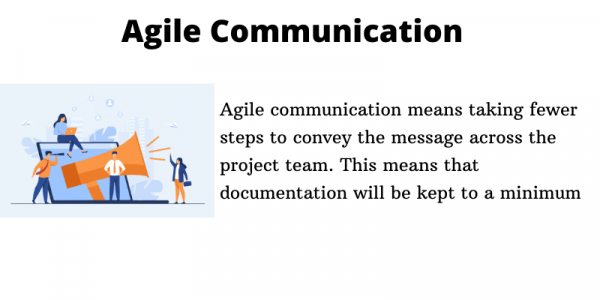
Agile communication techniques
There are multiple techniques that support agile communication such as
Feedback Method
Osmotic Communication
Social Media Based
Two-way communication
- Feedback method
It is an excellent method for gathering opinions from major stakeholders. The following are the techniques used in this method.
- Surveys (Google Forms, Microsoft forms, Typeform)
- Online Interviews
- Feedback Boxes
- Live documents
- Osmotic Communication
The term “osmotic communication” was first used by Alistair Cockburn to describe information that flows in the background and allows teams to decide when to contribute. In co-located teams, when members are seated next to one another and may overhear one another’s talks, this form of communication is typical. This form of communication isn’t currently viable because remote teams can’t hear one another, but you may start simulating it using internet tools such as zoom, Microsoft Teams, Google Meet, and WebEx.
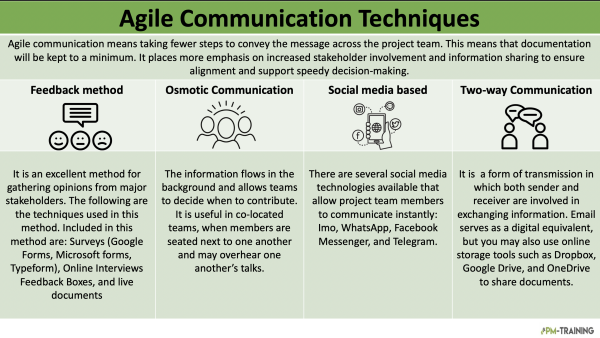
- Social media based
There are several social media technologies available that allow project team members to communicate instantly (IM) and can help plan events. Available tools are listed below.
- Imo
- Facebook Messenger
- Telegram
- WhatsApp.
You may form a group of project team members using any of the tools indicated above, and then you can start communicating.
- Two-way Communication
Two-way communication in agile project management is a form of transmission in which both sender and receiver are involved in exchanging information. Email serves as a digital equivalent, but you may also use online storage tools such as Dropbox, Google Drive, and OneDrive to share documents. Apart from these tools, there are other tools such as Click Up, JIRA, Trello, and Monday.com which enable Agile task boards to list the project tasks and share them with other team members.
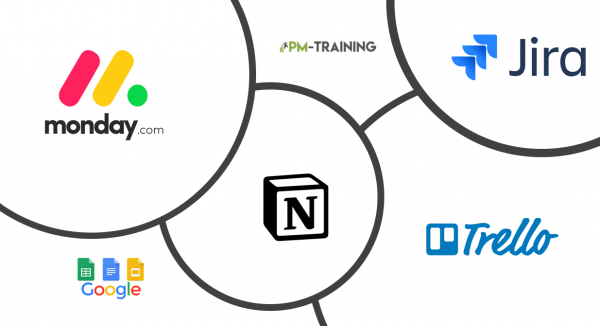
Agile communication examples
Here are examples of agile communication. These examples are taken from the agile task board which is based on user stories. The project team creates a task list (to do) based on the user story and updates each task’s status based on whether it is ongoing or finished.
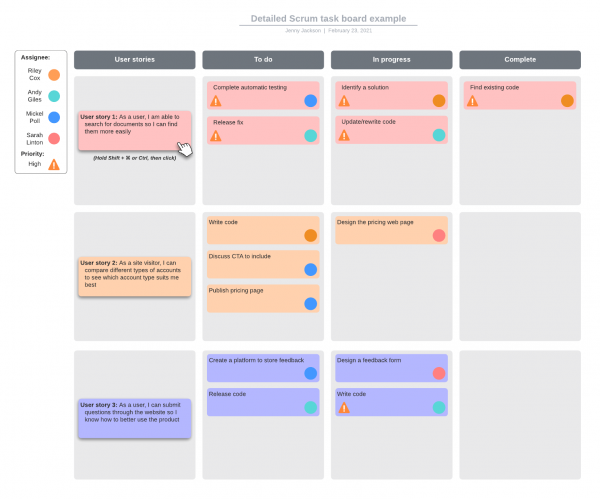
The second example describes a scenario in which the agile team is split into four groups, each of which is tasked with a different set of tasks. After each group has finished the tasks they were given, the results of those activities will be combined to create the final product.
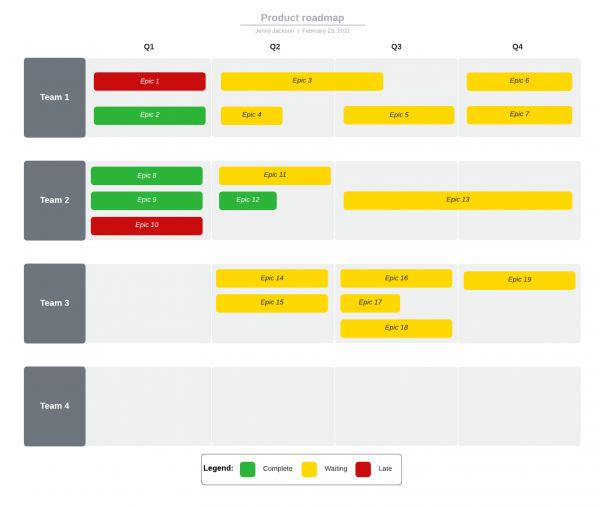
Tips and best practices
Streamline communication with Agile meetings
In traditional project communication plans, check-ins and status meetings follow a strict and detailed schedule. Agile communications strive to reduce emails and paperwork that aren’t necessary by having very focused and productive face-to-face meetings. Agile has also set rules to communicate at each level which are given below.

Following are the types of meetings that you can use to streamline communication with agile project management.
Sprint planning meeting: It is the meeting in which the project team decides which backlog items will be tackled during the upcoming sprint.
Daily scrum meeting: The Project Team synchronizes efforts and develops a strategy for the upcoming 24 hours during the time-boxed, daily Scrum meeting, which lasts 15 minutes.
Sprint review meeting: A sprint review is an informal meeting that the Scrum team organizes after a sprint ends in which they showcase their work.
Sprint retrospective meeting: The sprint retrospective meeting takes place at the conclusion of a sprint, a method of project management in which team’s complete certain tasks within a predetermined amount of time. During this meeting, you discuss what went well in the previous sprint and what may be done even better in the following one.
Make work status visible
Change is the whole point of Agile. Projects move quickly, and details are always changing. If you don’t have a clear picture of where a project is at the moment, you’ll miss important information and quickly fall behind, which will slow down the project’s progress. Ensure your communication plan involves ways to organize and share information clearly so that the status of the project is always clear and at hand.
Hold your team accountable
Traditionally, project managers are responsible for communication management. Agile, however, transfers responsibility for fundamental information exchange and communication to the project team members who are actually performing the task. Ensure that your team is equipped with the tools it needs to efficiently communicate information.
The success of your project will always depend heavily on communication, regardless of the strategy you use. Be mindful of the fact that planning is frequently just as crucial as performing when you transition to Agile communication. Having clear intentions and expectations from the start can make your communication stronger and more productive.
What tools are used in Agile communication?
Following are the tools that can be used in agile communication.
How important is communication in Agile?
The success of the project will always depend heavily on communication no matter whatever the strategy used. Without an effective communication strategy, project managers would find it extremely challenging to properly manage their team members and coordinate activities in order to successfully complete a project.
Which communication is the recommended method of communication in Agile?
According to Alistair Cockburn, osmatic communication is one of the effective communication methods in agile.
What are the 4 principles of agile?
Following are the four main principles of agile.
- Responding to Change Over Following a Plan
- Working Software Over Comprehensive Documentation
- Individuals and Interactions Over Processes and Tools
- Customer Collaboration Over Contract Negotiation
